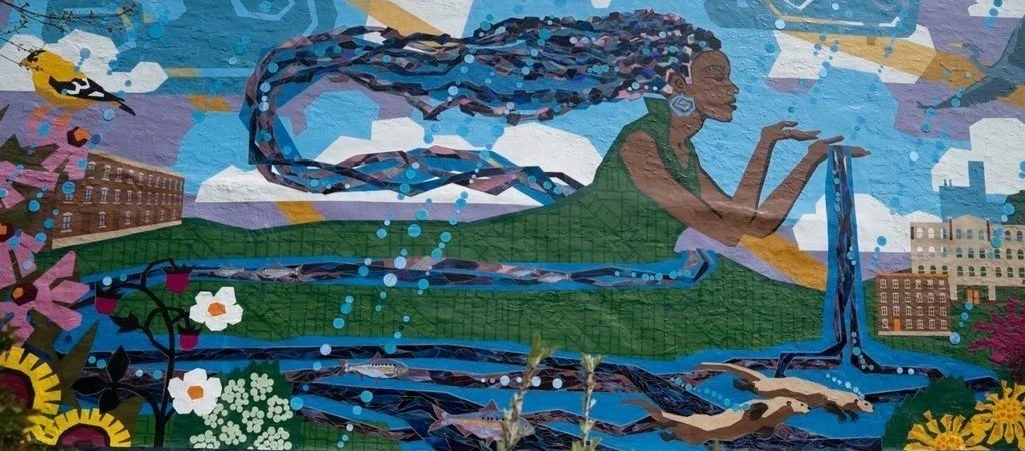My Role
Researcher, Designer, Team player
Scope
Reserach Study
Duration
01/2020 - 05/2020
Team
Patricia S. Loheed, Huyen Nguyen, and myself
Tools
Illustrator, Photoshop, InDesign, Premiere Pro, PowerPoint
Project Overview
This project aims to study Alewife housing under flood risks and climate case studies. The purpose of the project is to provide a big picture of the flooding issue in six towns in the Alewife Corridor (Belmont, Cambridge, Arlington, Somerville, Medford, & Winchester), where public housing is home to the most vulnerable communities.
We want to point out how seriously those communities are likely to be impacted by sea level rise. In that way, we can grab the attention of those with authority who hopefully can plan resilient places for the affected communities.
An overview of the sequenced impact of flooding in the Alewife Corridor
Problem
The Alewife “bathtub” is a large flat inland wetland, partially salt water in earlier times which has been filled since colonial times and is now the site of rampant housing development.
This area is underlaid by dense, fine clays that have no internal drainage to speak of. We are studying public and elder care housing at risk in this watershed
system, anticipating that this housing segment will be the least able to fund climate refugee relocation due to sea level rise.
sea level rise 2050-2070
Goals & Stakeholder Expectations
It takes a rather large village to create resilience - all of us!
Knitting the Alewife is building a learning community of community actors, municipal and state governments, university researchers, and local and regional nonprofits to collaboratively:
understand the Alewife as a dynamic eco-social system
find shared meaning in climate data
explore and evaluate alternative futures
co-implement a knitting demonstration project
We are focusing on building the social and political infrastructure and frameworks that can support co-creation knitting design activities, which are currently missing and/or poorly developed in the Alewife District. We have learned that without these, design projects are implemented by a few, without realizing full co-creation potential.
data source from NOAA's Office For Coastal Managemnet
Land loss due to inundation is slope-dependent
The image of the current neighborhood and its residents' voices
Research
Document the housing number of units and locations in the six communities:
We’re looking at 13 public & elderly housing sites at risk from temporary or permanent flooding due to sea level rise in six inland communities along Alewife Brook and the Mystic River in the Boston region.
This next site is Menotomy Manor in Arlington. The buildings here are family public housing which includes three unit types: Townhouses on Sunnyside, Duplexes on 7 Memorial Way, and Garden Apartments on 180 Gardner St. I also made a Sea Level Rise Overview (3-D Axion Animation) to present my research findings of those building types and the flooding issues caused by sea level rise in this site.
Next Step
Based on the problem and research findings, the next step and overall strategy is to create space for the river, rain, storm surges, and sea level rise. We need to approach it systematically.
What I Learned
I gained a comprehensive understanding of both periodic and permanent flood risks related to sea level rise, storm surge, and extreme rainfall events that have impacted coastal New England sites.
I enhanced my research skills by conducting detailed analyses of the public & elderly housing sites at risk from temporary or permanent flooding.
I strengthened my graphic design abilities by creating an issue board to visualize the potential future flooding scenarios. This allowed me to present complex data in a clear and accessible way.
I learned to use the video editing software Premiere Pro, which allowed me to present my research findings through videos.
Data Source
•‘Sea Level Rise: History and Consequences’, edited by Bruce C. Douglas, Michael S. Kearney, Stephen P. Leatherman, foreword by John Knauss, 2011.
•‘Encroaching Tides: How Sea Level Rise and Tidal Flooding Threaten U.S. East and Gulf Coast Communities over the Next 30 years’, Union of Concerned Scientists, October 2014.
•‘Urban Implications Of Living With Water’, Urban Land Institute, Boston, June 2019
•‘Sea Level Rise Viewer, USA.gov, February 03, 2020, https://coast.noaa.gov/slr/#/layer/slr/5/-7921005.000313269/5214027.784365906/12/satellite/none/1/2050/interHigh/midAccretion
•‘Tax Parcel map’, MassGIS Base Map, May 28, 2020 https://docs.digital.mass.gov/dataset/massgis-data-standardized-assessors-parcels
•Arlington Housing Authority https://www.arlingtonhousing.org/
•AP Cambridge Partners , LLC
•Belmont Housing Authority, https://www.belmontha.org/
•Medford Housing Authority http://www.medfordhousing.org/
•Landmark Management Solutions (LMS) https://www.landmarkhealth.com/
•VNA of Eastern Massachusetts https://www.healthcare4ppl.com/home-health/massachusetts/somerville/vna-of-eastern-massachusetts-227064.html
•Somerville Housing Authority http://sha-web.org/
•Cambridge Housing Authority http://www.cambridge-housing.org/
If you’d like to see more or would like to get in touch, do email me at szeng323@gmail.com
Thank you for reading!










